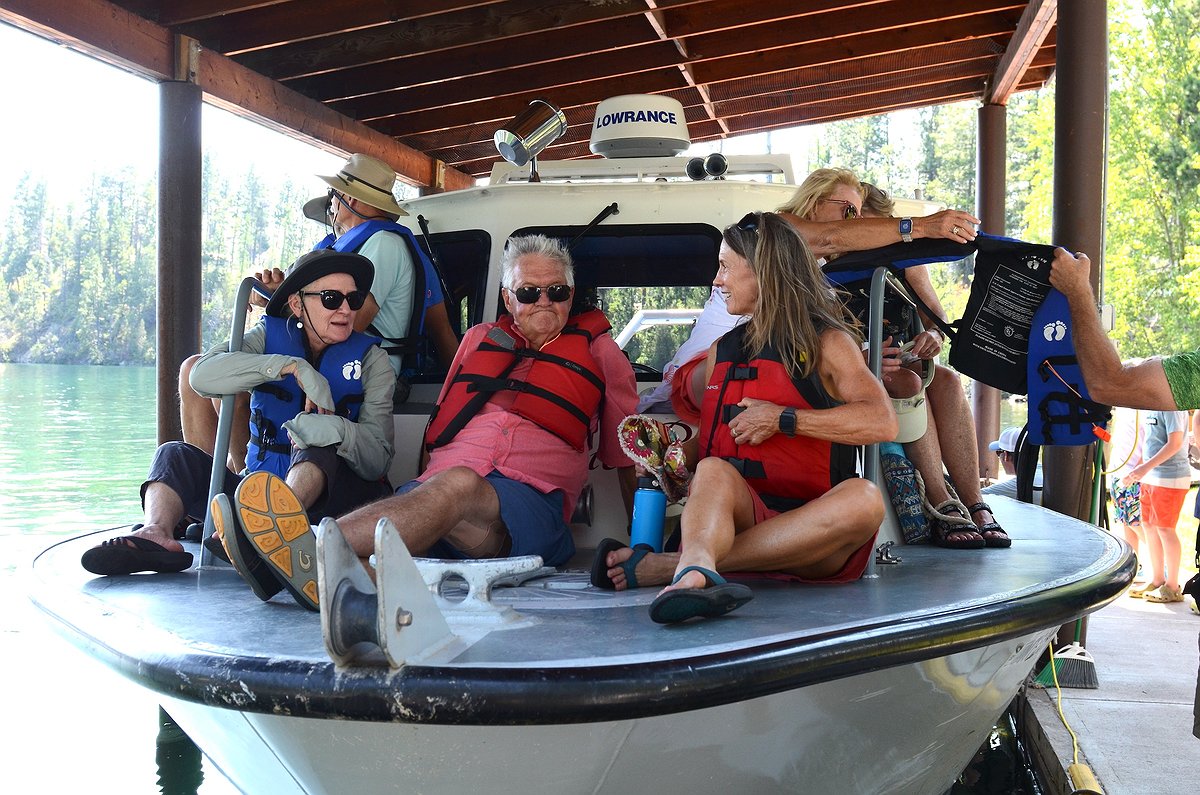Sentinel of the Lake: Bio Station celebrates 125 years
The place known as the Sentinel of Flathead Lake has guarded the lake’s pristine water quality since 1899 and Jim Elser, director of the Flathead Lake Biological Station, hopes it will still be doing that job 125 years from now.
The station, which celebrated its momentous anniversary with an open house last Friday, was founded in 1899 by Professor Morton J. Elrod at the "River House" in Bigfork under the auspices of the University of Montana. In 1908, it was relocated to its present home on Yellow Bay, where researchers, professors and students continue to study and learn about freshwater ecology. Over the years, the station’s research has expanded well-beyond Montana’s borders and influenced scientific research around the globe.
Hundreds of visitors explored the station last week, taking trips aboard the Jessie B research vessel, checking out displays of current research, listening to live music and dining on free food.
They also heard from Elser, who delivered his annual “State of the Lake” address, and Jack Stanford, who was the director and Bierman Professor of Ecology from 1980-2016.
Stanford recounted the many discoveries and achievements that accompanied his 45-year career at the center – spurred by more than $50 million in competitive research grants from the National Science Foundation, the Gordon and Betty Moore Foundation and the McKnight Foundation.
His students learned immediately that their classroom was outdoors, he said. “They eventually would follow me anywhere in any weather and that was really great.” More than 20 of them earned doctorates and some went on to become professors.
During his tenure, the station’s scientists developed methods for tracking nitrogen and phosphorus in the water, which contribute to algal blooms and diminish water quality. Eventually that research led to Montana’s statewide ban on detergents that contain phosphorus and contributed to efforts to upgrade sewage treatment facilities in the area.
Stanford’s team also researched the impact of the introduction of Mysis shrimp to the watershed by upstream fisheries managers. The shrimp found their way to Flathead Lake by 1981 and “created a food-web bomb and it cascaded all the way down to primary production, changing the lake forever,” said Stanford.
The station’s researchers documented “this long-term cascade – and that was a first in the field of lake ecology.”
Stanford continues to explore complex river systems around the Pacific Rim, from California and Alaska to the Kamchatka peninsula in Russia. Along the way, the station has helped build a cadre of “true ecosystem scientists, looking at the systems from microbes all the way to grizzly bears.”
All of that research remains rooted in Flathead Lake, which he calls “priceless.”
Elser also emphasized the still pristine nature of the lake, aided by the station’s Flathead Lake Monitoring Program. The program started several decades ago when concerns began to mount about water quality and how to protect the lake from contamination.
He credits his predecessors with implementing measures and collecting data that now extends across many years and reflects “their dogged pursuit of excellence for all that time.”
“The long-term trends are boringly good,” he added. Data shows no sign that water clarity had deteriorated over the past 40 years – making Flathead Lake among the clearest lakes in the world. It also reveals that oxygen and phosphorous levels remain healthy, and the lake’s temperature is consistent – all hallmarks of a healthy ecosystem. And so far, due to vigilance of invasive species monitoring programs across the state, Flathead Lake and all bodies of water in Montana, remain free of zebra quagga mussels – which would wreak havoc.
“We have a great, beautiful, clean lake that continues to be great, beautiful, and clean for 40 years,” Elser said. “The State of the Lake is excellent.”
He closed his talk with two messages: “Don't take the lake for granted. And we ask that you also don't take the bio station for granted.”
Community support, he added, is what allows the station to continue operating “at this incredibly high level of excellence and impact,” hopefully for the next 125 years.



